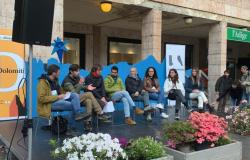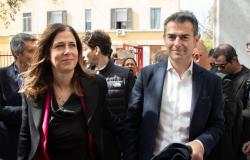An article by Francesco Morante, published on the website I’ll tell you about Benevento, on 31 March 2021, Pope Orsini’s Easter in Benevento, describes and recounts the journey that the pontiff made from Rome to Benevento, in 1727, three years after his election to Throne of Peter, returning subsequently for the second and definitive time in 1729, a year before “our sister corporal death” knocked on the door of her life. Benevento, a city and diocese that he did not abandon even as pope, retaining the pastoral government. “Cardinal Vincenzo Maria Orsini was archbishop of Benevento from 1686 until his death in 1730. In 1724 he ascended the throne of Peter, becoming Pope with the name of Benedict XIII. Although he was the bishop of Rome, as Pope, he did not he also renounced ownership of the diocese of Benevento. Only on two occasions did he manage to return to Benevento, the first time in 1727, the second time two years later. In that 1727 his journey coincided with the Easter period which he therefore spent in Benevento.
The Pope left Rome on March 24 and his journey lasted 10 days. There were numerous stops he made along the way. He arrived in Benevento on April 2 and remained there for forty days. It was a busy stay, full of religious ceremonies but also many visits. The first Sunday he spent in the city was Palm Sunday. In the afternoon the Pope received Msgr. Vincenzo Antonio Alemanni Nasi, Apostolic Nuncio of the Kingdom of Naples, who honored Orsini with “a large silk Palm with a flag with the arms of Our Lord, which he had placed behind the Cross of the High Altar with a gilded pedestal”. On the morning of Holy Thursday the Pope held the Holy Chrism Mass. On this occasion the Pope consecrated the oil that would be used during the liturgical year: the oil of chrism, which was used for confirmations and the ordinations of presbyters and bishops, the oil of catechumens for baptisms and ‘oil of the sick, also used for extreme unctions.
On Good Friday, after the usual religious services, the procession of the Dead Christ took place in the late afternoon. The Confraternity of the SS played a particular role in this procession. Sacramento, which had received in 1605, from Pope Paul V, the privilege of being able to free, on Good Friday, a man condemned to death. That year too the procession reached the prisons, which were located in the Rocca dei Rettori and “a man called Niccolò Ingagno, condemned to life for a barbaric murder committed by the same man”, was chosen. The murderer was taken to the Cathedral, where, in front of the crucifix that was in the Confraternity Chapel, he received grace from the Pope.
On Easter Sunday the Pope spent almost all of it in the Cathedral, busy with functions, sermons and sermons. The anonymous chronicler reports that “in his sermons then, and Sermoni, he shows himself to be very fond of the Benevento people, always repeating the following words: My people, I have always loved you, and served you for the space of 38 years, and don’t doubt anymore, that I will never abandon you. Indeed, he shows himself to be so fond of you that he cannot, if someone wants to, not cry out of tenderness, seeing the love of a Father who he never hoped to see again in this City.” The following day, Monday in Albis, the ordination ceremony of Monsignor Maffeo Nicolò Farsetti as archbishop of Ravenna was held in the Cathedral. It was a long and complex ceremony, which has been immortalized by a large canvas by the Rimini artist Giovan Francesco Buonamici.
April 15th, Tuesday in albis, was instead a day entirely dedicated to the church of San Filippo, which he had built. In the morning the Pope came out of a small door near Calata Olivella and, walking along what is now Via San Filippo, went to the new church. As a plaque still present in the church reminds us, he performed the blessing ceremony of the main altar and the crosses. He returned to the archbishop’s palace where, from the balcony, he came out several times to bless the crowd who was there to see him. In the afternoon, retracing the same route, he returned to the church to carry out a new blessing: a silver statue of San Filippo Neri, donated by the Metropolitan Chapter and transported there a few hours earlier. After the Easter period, the Pope remained in the city until mid-May 1727, before returning to Rome. Certainly that was the last time a Pope spent Easter in our city.”






